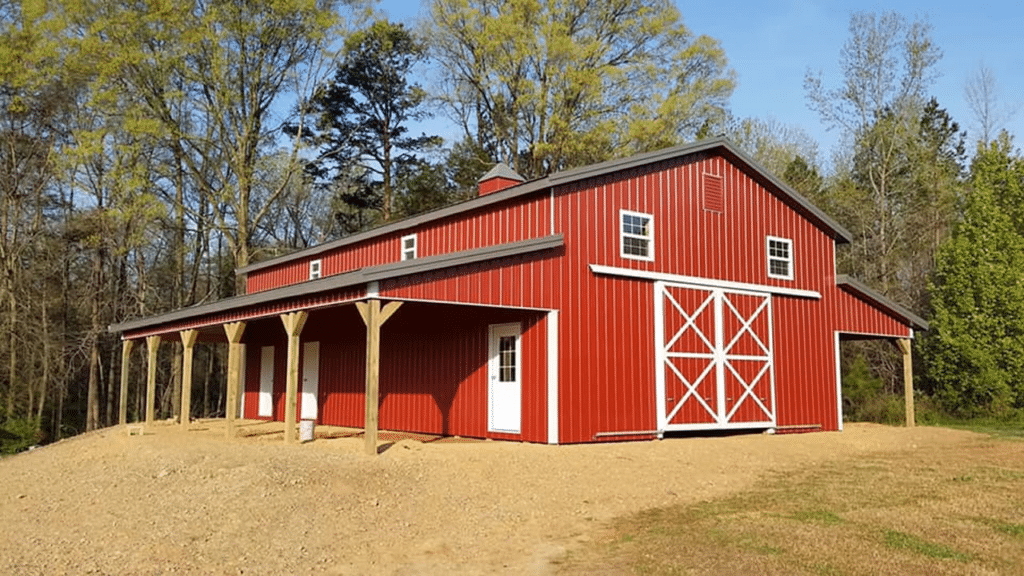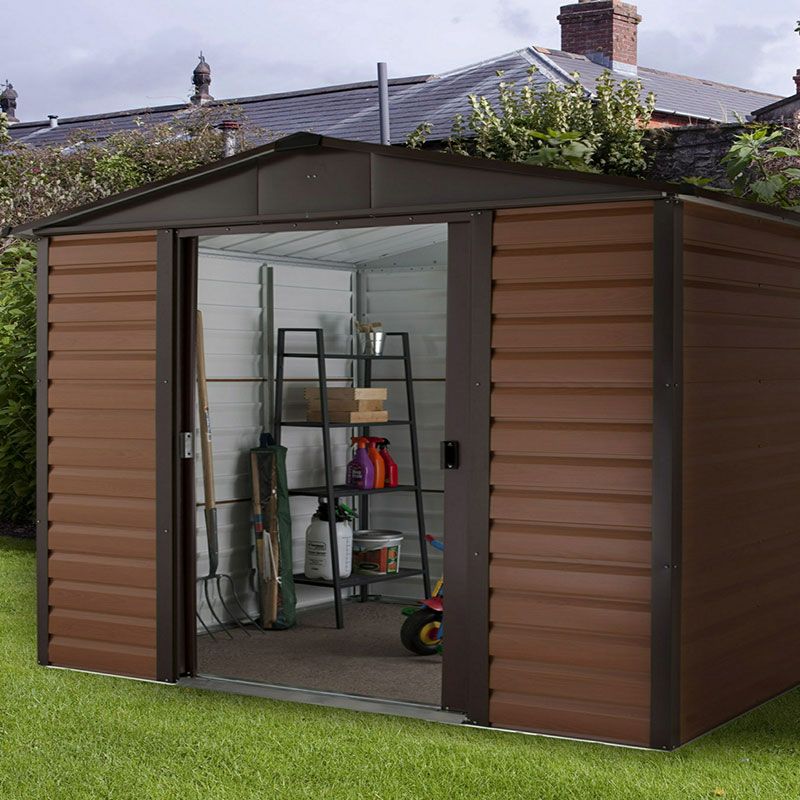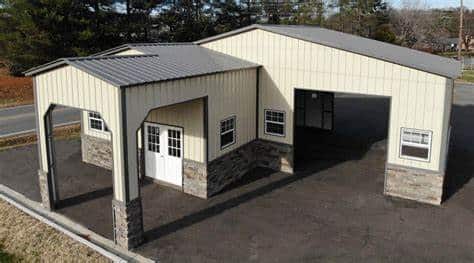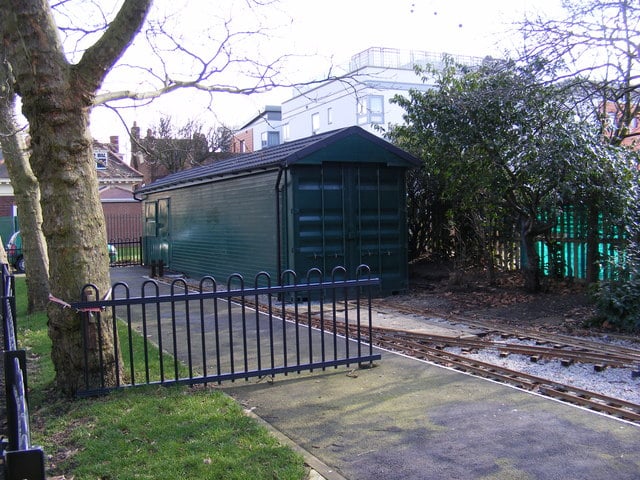Sustainable, Long-Lasting Metal Barns and Steel Buildings from Outdoor Options
Investing in a metal barn, steel building or any other steel structure from Outdoor Options is not only a wise choice but also a sustainable one that offers numerous benefits in the long run. Our steel buildings are designed to be energy-efficient and can withstand even the most extreme weather conditions, making them a reliable and durable option for property owners.
When you opt for a steel building and take proper care of it, it can last for several decades, providing exceptional value for your investment for such structures as Industrial buildings, Office Buildings, Agricultural Usage and many more!
But what makes metal buildings so robust and add to the structure’s lifespan? This is a question that many property owners ask, and in this blog post, we will delve into the factors that make metal buildings a lifetime investment.
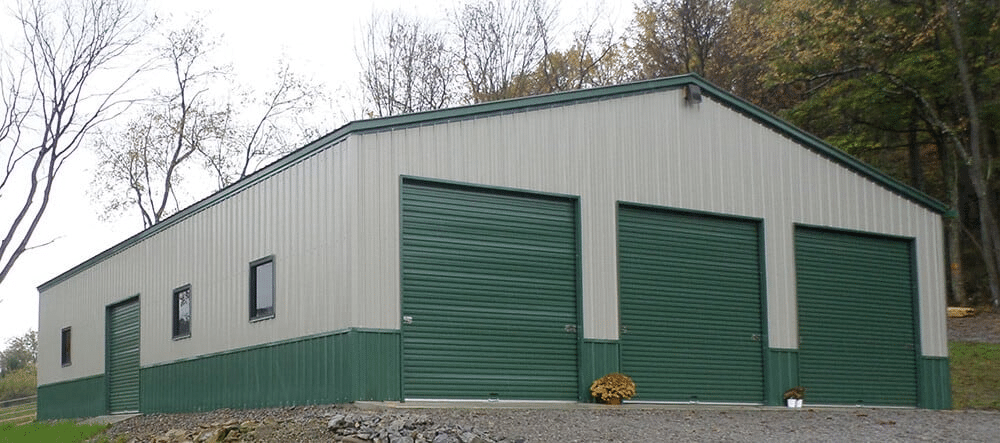
What Makes Metal Buildings Last?
Metal Buildings and Steel Buildings Resist Corrosion
Metal buildings are known for their durability and long lifespan, but one of the key factors that contribute to their longevity is their ability to resist corrosion.
Corrosion is a natural process that occurs when metal comes into contact with oxygen and moisture. Over time, this reaction can cause the metal to weaken, deteriorate, and ultimately fail.
However, metal buildings are designed with different methods that are resistant to corrosion. The most common material used in metal buildings is steel, which is an alloy of iron and other elements such as carbon, manganese, and silicon.
These Steel Based Structures are inherently resistant to corrosion because it forms a protective layer of oxide on its surface when exposed to air and water.
The Benefits of Steel Construction
most steels used in metal buildings are coated with a layer of zinc or other metallic coatings that act as a barrier against moisture and oxygen. This process significantly enhances the durability and corrosion resistance of the steel.
Metal buildings’ ability to resist natural occurrences depends on their design, construction, and mechanical properties. They have proper ventilation and drainage systems that prevent moisture buildup, promote air circulation, and reduce corrosion risk. They also have corrosion-resistant fasteners and joint systems designed to last as long as the building itself.
In summary, metal buildings resist corrosion due to their inherent resistance, protective coatings, and proper design and construction with structural steel . This resistance to corrosion ensures that metal buildings last longer, require minimal maintenance, and provide excellent value for their investment.
Metal Buildings are Fire Resistant
Steel buildings have another important advantage – their ability to resist fire. Steel is non-combustible, which means that it does not burn, ignite or contribute to the spread of flames.
This makes steel buildings a safer choice than wooden and other materials in areas that are prone to fires, such as dry and arid regions or forested areas.
In these areas, fires can quickly get out of control and devastate entire communities. Steel structures can help minimize the damage caused by fires, making them a popular choice for people who live in areas with high fire risk.
Steel’s melting point is approximately 2,500 degrees Fahrenheit (1,370 degrees Celsius). This means that in the event of a fire, steel will not soften, weaken or collapse as quickly as traditional wood or other building materials. Additionally, steel does not produce toxic fumes or smoke, which can be deadly in a fire.
Although steel buildings are less likely to catch fire or contribute to the spread of flames, they are not completely fireproof. Fire-resistant coatings and insulation materials are used in steel building designs to slow down the spread of flames and preserve the building’s structural integrity in case of a fire.
Properly engineered and constructed steel buildings have fire-resistant insulation and coatings to minimize fire damage, as well as the use of structural members being utilized to reduce risk of collapse. They also have fire-rated doors, windows, and wall systems to compartmentalize and prevent the spread of fire.
Any steel structure can be Moisture-Resistant
Steel buildings use materials that resist moisture well. Metal is the primary material used, which doesn’t absorb moisture and is less prone to rust, corrosion, and water damage. Zinc or aluminum coating adds extra protection against moisture.
Moreover, a steel structure is typically designed with airtight seals and ventilation systems that further prevent moisture from entering the structure. The airtight seals and insulation used in steel buildings help to keep moisture out, even in areas with high humidity levels.
The ventilation systems used in steel buildings also help to regulate moisture levels by allowing fresh air to circulate throughout the structure. By maintaining a proper balance of moisture and air, steel buildings can remain moisture-free, even in areas with high humidity or frequent rainfall.
Superior Comprehensive and Tensile Strength of Structural steel
One of the primary advantages of structural steel is the ability to withstand harsh weather conditions, such as high winds, snowstorms, and earthquakes. This ductile nature is crucial in areas prone to natural disasters.
Steel buildings have even been shown to withstand hurricanes and tornadoes, which can cause significant damage to traditional concrete buildings or wood construction. This is where the construction process takes Comprehensive and Tensile strength into account.
The importance of Comprehensive Strength
Comprehensive strength is the ability of a material to resist forces that try to crush or compress it. Structural Steel is renowned for its exceptional comprehensive strength, making it one of the strongest materials available for construction. It can withstand extreme weights and pressure, which makes it ideal for large-scale construction and structures.
The importance of Tensile Strength
Tensile strength refers to a material’s ability to resist forces that try to pull it apart. Steel has a high tensile strength, which makes it an excellent option for Structural Steel construction that might require long spans or tall heights. This feature allows for more flexible design options and allows for a broader range of applications for steel buildings.
The comprehensive and tensile strength of steel buildings make them the superior choice for many construction projects. They are durable, flexible, and eco-friendly, making them an excellent investment for property owners and builders alike. The factors of If you are looking for a reliable, long-lasting building material, steel is the way to go.

Steel Fabrication Has Low Maintenance
A steel structure and its components can be built to withstand a wide range of environmental conditions and weather patterns, making them an ideal choice for outdoor applications and ensuring their longevity.
Unlike other construction material, structural steel does not require regular painting or staining to maintain its appearance, which means property owners can save time and money on maintenance costs.
Moreover, steel fabrication has high strength and is versatile, allowing for customization and design flexibility in design to ensure the steel construction is correctly built for the environment before the first steel frames are put in place. This allows for a precise fit and ensuring optimal performance. Customizable steel structures and components also offer increased durability, as they are built to withstand the unique demands of the project. Overall, steel fabrication provides a low maintenance, cost-effective, and versatile solution for a wide range of applications.

Steel Building Maintenance Tips
While the quality control of pre engineered steel buildings helps avoid high maintenance costs, ensuring that you are keeping your metal building properly maintained can help in improving the life span of your structure. Below are a few simple tips on maintaining your structural steelwork.
Give your metal building a thorough cleaning
It is advisable to conduct a thorough cleaning of the exterior during the spring season to eliminate any residual winter grime. If the color of your steel building has faded over time, applying a fresh coat of paint or even selecting a new color is a great opportunity to revamp its appearance.
Monitor Moisture Levels
Moisture can cause significant damage to metal buildings, leading to rust and corrosion. In high quality steel structures, this would have to be regulated less frequently. However, if the owner desires to save save money, the construction material can be opted for lower quality steel to increase cost savings.
Inspect the exterior for damages
Due to the constant exposure of steel buildings to natural elements, it is inevitable that they will experience minor damages. These can include small dents caused by hail or scratches and scrapes from debris during windstorms.
Fortunately, these blemishes can be easily addressed by buffing them out, provided that the underlying metal substrate beneath the panels is safeguarded. Taking prompt action to rectify these small issues can help prevent more significant damages in the future.
How Long will your steel building last?
The lifespan of a steel building depends on several factors, all of which have been discussed. these factors include things such as the quality of materials used, maintenance, and the environment. Let’s review each of these factors to understand how long your steel building will last.
Quality of Materials Used:
The lifespan of a steel building is greatly influenced by the quality of materials used in its construction. High-quality steel in your structural design will last longer than lower-quality steel, and the same applies to other materials such as insulation, roofing, and siding. When choosing materials, it’s essential to prioritize quality over cost to ensure that your building lasts as long as possible.
Maintenance:
Regular maintenance is key to the longevity of a steel building. Regular inspections, cleaning, and repairs can help prevent rust and other damage that can shorten the lifespan of your building. Ignoring maintenance issues can lead to more significant problems that are more costly to fix.
Environment:
The environment in which your steel building is located also affects its lifespan. Extreme weather conditions such as high winds, heavy rain, snow, and hail can damage a building’s structure and reduce its lifespan. Similarly, exposure to harsh chemicals and pollutants can also cause corrosive damage, leading to faster deterioration of the building.
Steel buildings are a durable and long-lasting alternative to traditional construction methods. The lifespan of your building depends on the quality of materials used, maintenance, and the environment. To ensure your steel building lasts as long as possible, invest in high-quality materials, prioritize regular maintenance, and choose a location that minimizes exposure to harsh environmental factors.
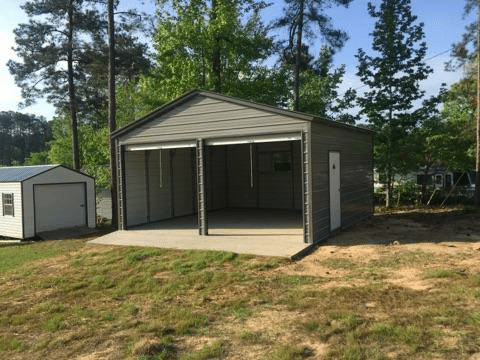
Is it worth getting a metal building?
In conclusion, getting a metal building can be a wise investment for many reasons. They have lower project costs, are durable, require low-maintenance, versatile and have high strength against elements such as strong winds or even heavy snow.
Metal buildings can also be customized to fit your specific needs and can be used for a variety of purposes. Whether you are looking for a structure for extra storage space, need a structure for your business, a need for temporary structures, a metal garage or any other intended use. A metal building can be an excellent option.
While there may be some initial costs involved, the long-term benefits of owning a metal building make it a worthwhile investment. Ultimately, it’s important to consider your unique needs and budget before deciding if a metal building is right for you.

